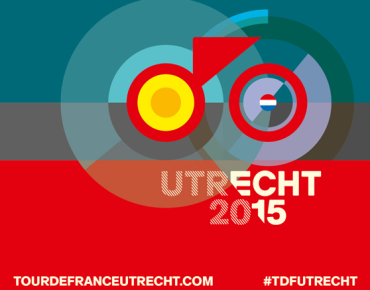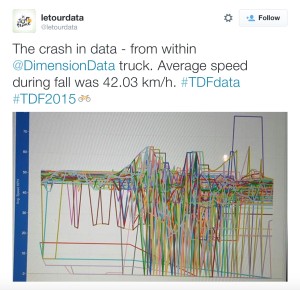Analytics Put Tour de France Fans in the Race

Billions of cycling fans around the world who follow the progress of their Tour de France via a sophisticated combination of cloud, big data analytics, and mobile technologies are gaining insight into how their favorite bikers, 22 teams, or nations fare across the challenging course.
In partnership with Tour organizer Amaury Sport Organisation (ASO), global service provider Dimension Data entered into a five-year agreement to provide real-time information on each of the 198 individual riders as they travel 3,360 kilometers (almost 2,088 miles) in 21 stages. Fans gain visibility via the BETA live tracking site, which also sends tweets, a daily wrap-up, and allows users to track their favorite riders.
Highlights from its analysis to-date include:
- The highest speed in the first 11 stages was 109.08 kilometers per hour, accomplished by Lars Boom (AST), during stage 3, at the 144 km mark. This was followed by 93.38 km/h by Alejando Valverde (MOV) at the 149 km mark on July 15 at stage 11, and 78.48 km/h by André Greipel (LTS) on stage 5 at 89.4 km.
- The highest average speed achieved by a stage winner was 55.45km/h (Rohan Dennis on stage 1).
- The average speed across all riders for the first 11 stages was 42.46 km/h.
- The average speed of the riders during the big spill in last Wednesday’s third stage was 42.03 km/h.
- The analysis of riders’ speed through a Feed Zone shows that on average, riders slow down 20 km/h when picking up their bags.
This release of data trends is only one aspect of riders' information available to the Tour's many fans.
As contestants pedal to the July 26 finale, a team of Dimension Data technicians follows in a high-tech "data truck" that processes in real-time information collected from sensors placed under each rider's bicycle seat, said Peter Gray, Tour de France technical program lead, in an interview with Enterprise Technology. That data then is housed in Dimension Data's cloud, which uses technology from a number of the solution and cloud service provider's partners such as Microsoft, IBM, and Cisco, he said.
"We had a very compressed timeframe to build this complete solution. The initial agreement with ASO was only put in place at the beginning of March of this year. We started working on the solution at the beginning of April. We had three months to design, implement, and build the entire solution," said Gray.
This team process between 1.5 million and 2.5 million records per stage, according to Jeremy Ord, Dimension Data executive chairman and executive sponsor of ASO, in a statement. As many enterprises have discovered, using cloud removed many layers of complexity, enabling Dimension Data to deliver on its contract and to continue adding capabilities throughout the race, which began July 4.
"It's meant we're able to do things in a much faster way than a traditional hardware solution or network solution. We'd have had to build a mobile datacenter in a truck, which I think was done in about a month, from specing the vehicle and server environment, through to procuring through to having it installed and up and running – an incredibly short time window," Gray said. "Software development began with using tools that are highly flexible; using Agile we've been able to accelerate the development process. It allows us, throughout the course of the Tour, to innovate and add new capabilities, to adjust as needed."
Throughout the race, 198 riders in 22 teams are expected to generate 42,000 geospatial points and 75 million GPS readings. The live-tracking website supports 17 million viewers and 2,000 page requests per second; Dimension Data's cloud platform, spread over five continents, processes rider data and consumes more than 350 million CPU cycles per second, according to the service provider. At its busiest, the BETA live tracking site supported more than 25,000 unique visitors simultaneously, Dimension Data reported.
"This top notch technological development will enable a better analysis of the race, highlight the race tactics, and also show how essential in this sport is each rider’s role within his team," said Christian Prudhomme, Tour de France director, in a statement. "It will now be possible to understand how to prepare for a sprint finish in the last few kilometres of a stage, feel the wind’s impact on the rider’s speed, and so much more. Our efforts combined with those of Dimension Data will permanently change the way we follow cycling and the Tour de France."
Related
Managing editor of Enterprise Technology. I've been covering tech and business for many years, for publications such as InformationWeek, Baseline Magazine, and Florida Today. A native Brit and longtime Yankees fan, I live with my husband, daughter, and two cats on the Space Coast in Florida.











